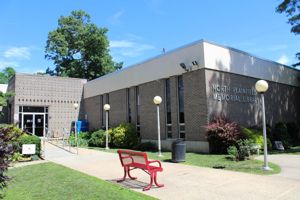Top Ten Tech Trends For 2018
About Blog Post
Mar 22, 2018
by Pressroom
by Chris Murray, adult services supervisor at SCLSNJ’s Bridgewater Library branch
- Edge Computing: By now you have probably heard of Cloud Computing. Edge Computing is a new extension of it, where data is kept on the "edge" of the cloud, closer to where your data are located, rather than in some centralized location. This becomes useful in locations where data must be extracted quickly, or from a remote location where bandwidth can be an issue. Think of a trucking company, where data on each individual vehicle could be handled on the Edge, while overall data aggregation for the fleet would be on the Cloud. Each individual vehicle would host the data for its own operation on a computer inside the vehicle, and after it pulls into the depot, it would offload the data as well as its delivery.
- Blockchain: Think of the blockchain like a Wikipedia article. Each edit is made from any computer, and every other computer accessing it sees the most recent edit. The history is also part of the article, with a list of every edit that has been made. The difference is that the data are not held on one central server, but exact copies are made on several thousand computers simultaneously. Since the data in a blockchain are not held centrally, the data are safe from attack; the data are further stored as encrypted values, and if each computer agrees that the values match, the “block” is updated on all of the computers. The history is also part of the value (making the “chain”); similarly to the Wikipedia article, each transaction will show its own history. This allows for things like ledgers being updated in minutes rather than days, without needing to go through a central server for validation.
- Artificial Intelligence (AI): AI is used in devices like Apple’s Siri or Google’s Alexa (devices that use voice recognition technology to answer customers' questions); in image processing (apps that can identify a bird or a tree from a picture of the object); and in vision systems (self-driving cars, for instance). AI can be used to handle natural-language queries and draw from big-data sources to return answers similar to those of a human. Right now AI is seen as more of an enhancement to human-provided service, but computers are becoming more and more powerful as the years go on.
- Virtual and Augmented Reality: Virtual Reality uses headsets to project an immersive illusion around the target, and Augmented Reality uses a camera with a screen between the subject and viewer to place illusory objects into a real scene. This can be used to place a person or object where they could not ordinarily be, or to model a design without having to construct it physically and still be able to observe it from all angles.
- Internet of Things: The Internet of Things involves objects that connect to the Internet and relay data to the cloud (or the edge, above) about their performance or contents. This can be used for item maintenance, inventory control, or just collecting data on how much something is used.
- Digital Twins: When Apollo 13 broke down in space, NASA engineers built a mockup of the craft and used the technology that the astronauts would have available to help them fix the spaceship to bring it home. A digital twin is similar, but it exists in the virtual world. For example, when an object (such as a car engine) is connected to the Internet of Things (above) and relays information about itself - in real time - to another location, where a mechanic can then determine its status without having to be next to the engine or without having take it apart by hand.
- Geotargeting: Geotargeting, also known as location-based technology, is the ability to deliver targeted information based on geography. Just as you would not want to place a billboard for an attraction in California over a highway in New Jersey, you would want to keep your Internet advertising as local and targeted as possible. IP addresses and GPS coordinates can be used to determine a customer's location, and a business could then feed these customers information about, for example, the most local branch of your company.
- Conversational Robots: Like a phone tree that can understand limited speech, a chatbot can use machine learning (below) and artificial intelligence (above) to respond to customer comments and complaints over a chat service. Conversation robots possess the ability to answer a large variety of questions and know when to pass the question on to a human if stumped.
- Machine Learning: Similar to AI, Machine Learning is the ability of a computer to perform new tasks without having a human consciously showing the computer how to do so. Amazon uses machine learning to determine product recommendations by using the data from their millions of customers to predict what their next customer might want to buy. Machine learning extrapolates upon and analyzes data in ways a simple algorithm could not.
- Continuous Adaptive Risk and Trust Assessment (CARTA): CARTA means that rather than dealing with security threats through black-and-white rules, security must evolve into the greys. As more information about a potential threat (or ally) becomes available, a CARTA approach would use machine learning (above) to determine the company's response level. Is the user logging in to a secure location from an unfamiliar computer? Even if the user normally has access, a CARTA approach would raise a flag about that access.








